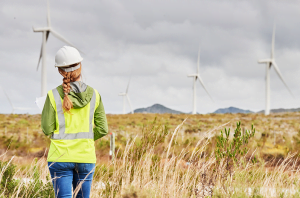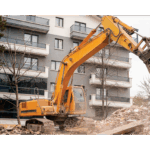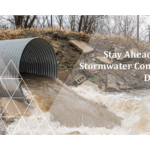
An environmental site assessment is a crucial step in evaluating the potential environmental risks and liabilities associated with a property. In the case of Coppell, Texas, conducting a Phase 2 Environmental Site Assessment is of utmost importance in ensuring the safety and compliance of any proposed development or land use. This article will delve into the purpose, process, interpretation, and legal considerations surrounding Phase 2 Environmental Site Assessments in Coppell, shedding light on the role of environmental consultants in this crucial endeavor.
Understanding the Purpose of Phase 2 Environmental Site Assessment
Before delving into the specifics of Phase 2 Environmental Site Assessments, it is essential to grasp the overall purpose and significance of these assessments. The primary goal of a Phase 2 assessment is to identify and understand potential environmental hazards and contaminants present at a site. By conducting this assessment, stakeholders gain valuable insights into the quality of the soil, water, and air, thereby enabling them to make informed decisions about land use, potential remediation measures, and compliance with environmental regulations.
The Importance of Environmental Site Assessments
Environmental site assessments play a crucial role in safeguarding both human health and the environment. By identifying potential contaminants and assessing their impacts, these assessments contribute to the preservation and protection of natural resources, ensuring sustainable development and responsible land use practices.
Key Components of a Phase 2 Assessment
A Phase 2 Environmental Site Assessment comprises several essential components that collectively provide a comprehensive understanding of a site’s environmental conditions. These components typically include:
- Sampling and Analysis of Soil and Water: Soil and water samples are collected from various locations across the site and sent to accredited laboratories for analysis. These analyses help identify the presence and concentration of potential contaminants.
- Site Characterization: The physical and environmental characteristics of the site, including geology, hydrogeology, and topography, are evaluated to gain a holistic understanding of the potential pathways for contaminant migration.
- Assessment of Historical Land Use: Assessing the previous land uses and activities that may have contributed to potential contamination is vital. This information assists in identifying potential sources of contamination and helps direct the sampling strategy.
The Process of Conducting a Phase 2 Environmental Site Assessment in Coppell
Understanding the process involved in conducting a Phase 2 Environmental Site Assessment is key to evaluating the complexity and thoroughness of these assessments in Coppell.
Initial Site Inspection and Data Collection
The first step in the Phase 2 assessment process involves an initial site inspection. Environmental consultants visit the site and perform a visual inspection to identify potential areas of concern, such as evidence of past or current contamination, storage tanks, or potential sources of pollutants. They also gather historical data, including property records, permits, and historical aerial photographs, to gain insights into past land use and potential contamination sources.
Laboratory Testing and Analysis
Once the initial data collection is complete, the next step involves collecting soil and water samples from relevant locations on the site. These samples are then sent to accredited laboratories for thorough testing and analysis. The laboratory results help identify and quantify potential contaminants, providing valuable information for risk assessment and further evaluation.
Risk Assessment and Evaluation
After the laboratory testing, environmental consultants assess the potential risks associated with the identified contaminants. They evaluate factors such as the concentration and type of contaminants, the proximity to sensitive receptors (such as residential areas or water bodies), and the potential pathways for contaminant migration. This risk assessment helps stakeholders make informed decisions regarding site remediation, management, or redevelopment.
Interpreting the Results of a Phase 2 Environmental Site Assessment
Properly interpreting the results of a Phase 2 Environmental Site Assessment is crucial for understanding the potential environmental impacts and determining the appropriate course of action.
Understanding Contaminant Levels
The laboratory results provide valuable information about the presence and concentration levels of contaminants at the site. Environmental consultants analyze these results in comparison to regulatory standards and guidelines to determine the severity of contamination. This information helps stakeholders understand the potential risks and assess the need for remediation or mitigation measures.
Potential Environmental Impacts
By understanding the contaminant levels and their potential migration pathways, environmental consultants can evaluate the potential impacts on both the immediate area and the broader environment. This assessment includes considering the presence of sensitive receptors, such as groundwater sources, surface water bodies, or nearby residential areas. Understanding the potential environmental impacts enables stakeholders to make appropriate decisions regarding site management and mitigation strategies.
Recommendations for Remediation and Management
Based on the assessment of contaminant levels and potential environmental impacts, environmental consultants provide recommendations for remediation and management of the site. These recommendations may include strategies to mitigate the risks posed by contaminants, such as implementing soil or groundwater remediation measures or appropriate land use restrictions to prevent further exposure.
Legal and Regulatory Considerations for Environmental Site Assessments
Environmental site assessments are not only important from an environmental perspective but also have legal and regulatory implications that must be considered. In the case of Coppell, adherence to environmental laws and regulations is crucial to avoid potential legal implications and liabilities.
Compliance with Environmental Laws and Regulations
Coppell, like any other municipality, has specific environmental laws and regulations that govern development and land use. Conducting a Phase 2 Environmental Site Assessment ensures compliance with these legal obligations and ensures that the proposed project meets environmental standards. Failure to comply with these regulations can result in significant legal and financial repercussions for all stakeholders involved.
Potential Legal Implications and Liabilities
Identifying and addressing potential environmental hazards through a Phase 2 Environmental Site Assessment plays a vital role in mitigating legal implications and liabilities. By uncovering potential contamination sources and assessing associated risks, stakeholders can take proactive measures to prevent harm to human health and the environment. Furthermore, these assessments provide a basis for transparency and accountability, ensuring compliance with legal obligations and minimizing the risk of lawsuits or claims due to environmental damages.
The Role of Environmental Consultants in Phase 2 Assessments
Environmental consultants play a pivotal role in the successful execution of Phase 2 Environmental Site Assessments. Their expertise, knowledge, and guidance throughout the assessment process are critical to ensuring accuracy and reliability of the results.
Selecting a Qualified Environmental Consultant
Choosing a qualified environmental consultant is essential to guarantee the quality and integrity of a Phase 2 Environmental Site Assessment. Consider factors such as experience, certifications, and references when selecting a consultant. A qualified consultant will possess the necessary technical expertise and access to accredited laboratories to conduct thorough assessments and provide reliable recommendations.
How Consultants Facilitate the Assessment Process
Environmental consultants guide stakeholders through the entire Phase 2 assessment process, from initial site inspections to result interpretation. They collect and analyze data, coordinate with laboratories, and prepare comprehensive reports that outline the findings, risks, and recommendations. Additionally, they assist stakeholders in understanding the legal and regulatory context, ensuring compliance, and minimizing potential risks and liabilities.
In conclusion, conducting a Phase 2 Environmental Site Assessment in Coppell is integral to understand and mitigate potential environmental risks and liabilities associated with land use and development. By comprehensively assessing potential contaminants and evaluating their risks, stakeholders can make informed decisions, protect the environment, comply with regulations, and prevent legal implications. Leveraging the expertise of environmental consultants is crucial in ensuring accurate assessments and reliable recommendations that prioritize both human health and environmental preservation.
If you’re ready to move forward with a Phase 2 Environmental Site Assessment in Coppell, look no further than ESE Partners. Our team of seasoned environmental engineers and scientists is equipped to handle every aspect of your assessment with precision and care. At ESE Partners, we’re committed to responsibly moving business forward through innovative and sustainable environmental problem solving. Whether you need assistance with due diligence, remediation, compliance, or any other environmental service, we have the expertise and local presence to provide you with honest, quality-driven results. Don’t let changes in regulatory processes slow you down. Let us help you navigate the complexities of environmental regulations and ensure your project’s success. Request A Proposal today and partner with the premier provider of environmental consulting services in Coppell and beyond.








